Why Is Caviar So Expensive? | How Much Is Caviar? | Caviar's Real Price

Caviar is considered one of the most expensive delicacies in the world, and with variations like almas white beluga retailing for $25,000 per KG there is no other food on earth valued quite so highly. Not all salted eggs are created equal however, and costs can vary by numerous digits depending on what you're buying and who you're buying from. Even though some types of caviar and salted fish roe are far more affordable than others, most consumers don't fully realize why their caviar costs as much as it does. From rare beluga caviar all the way down to salty capelin roe, there are so many cured fish, crustacean and mollusk eggs accessible to the public that prices can easily confuse anyone without caviar buying experience.
Let’s investigate exactly what causes certain caviars to be so highly priced when others are available for a fraction of the cost:
Why Is Caviar So Expensive?
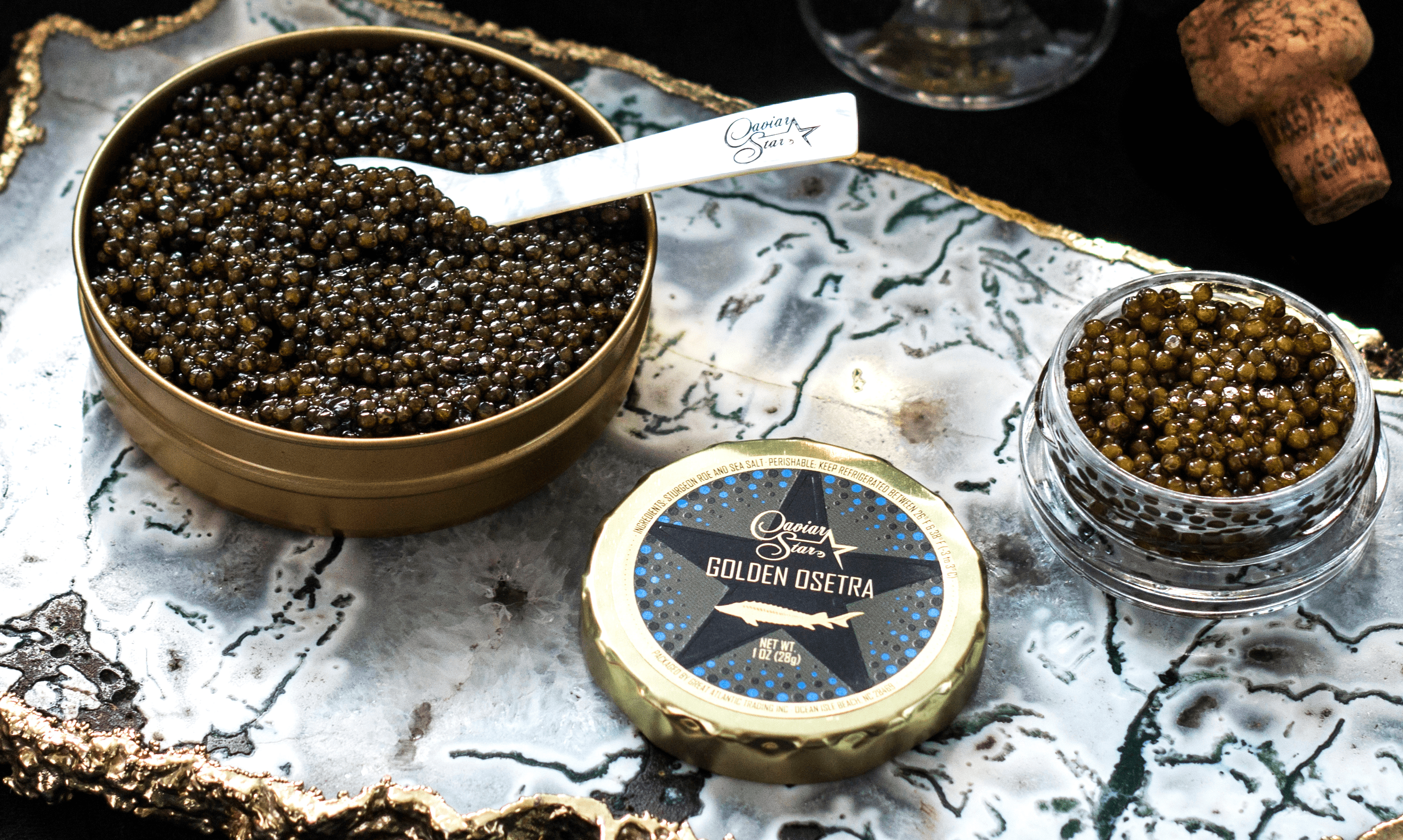
The price of a specific caviar can generally be broken down into the following 5 cost factors:
- Type of fish (species scarcity / availability)
- Time it takes to produce roe (maturation)
- Harvesting and manufacturing (process)
- Quality of the salted roe (grading)
- Supply & demand (sourcing & popularity)
Obviously, this generalization is not all-encompassing, and cannot narrow down every cost component of each roe type from every available source world-wide, but, by individually breaking down the above 5 items we can get a broader view of how caviar products get their price tags. All of the expenses incurred by caviar producers are strongly connected to both the rarity of the eggs themselves and all their associated processing costs. Let’s dive into the 5 main expense factors for a closer examination .
The Type of Fish Affects Caviar Price
A caviar’s market value is largely based the type of animal it came from. We've talked about the difference between true caviar and salted fish roe before, and it is worth mentioning again for this "caviar's price explained" blog. True caviar, the priciest of the salted fish roes, comes from sturgeon, a species group that has been pushed to near extinction by mankind.
Sturgeon caviar was first launched into high-society status at the height of Russian Imperialism during the late 19th century. Ever since then, the species scarcity factor has been the leading determinant of price. Caviar's value as a luxury good was in fact the main reason why wild sturgeon roe supply decreased so rapidly throughout the 20th century. Catching desirable caviar producing fish quickly became the most profitable venture available for fishermen which, in-turn, created more incentives to harvest sturgeon species, increasing their rarity and pushing the price of true caviar higher.
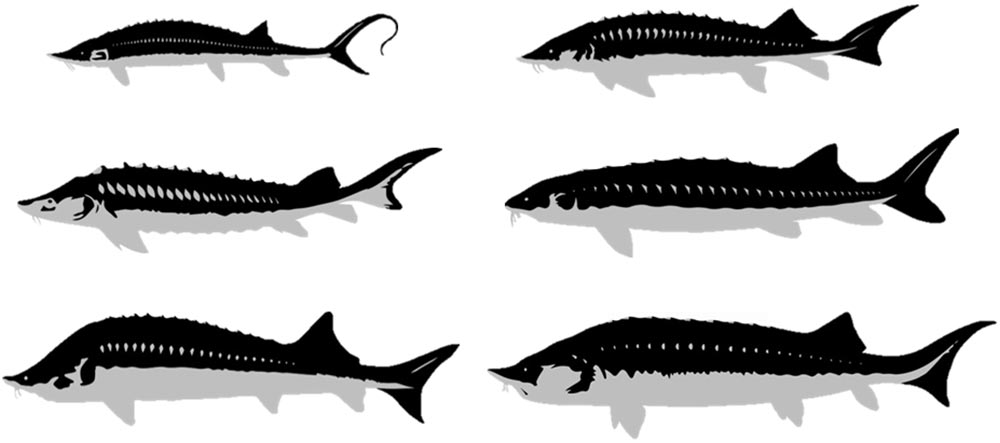
The International Union for Conservation of Nature has placed 18 species from the Acipenseridae family on their list endangered list (Red List of Threatened Species) and still considers sturgeon to be “ more critically endangered than any other group of species”.
In addition to the overfishing and poaching of sturgeon that continues to occur in some countries to this day, the most endangered sturgeon species have still not recovered from the destruction of their habitats, pollution of their waters and damming of their spawning grounds. Since these fish remain so rare and difficult to study in the wild, both the perceived scarcity and actual availability of sturgeon products is fully reflected in market prices.
Wild-caught sturgeon and the caviar they produce is now regulated so intensely by government agencies and global trading initiatives that it is nearly impossible to get (let alone afford) anywhere in the world. The important work done to prevent the extinction of these species factors into the overall price of caviar today. In the end, the scarcity of caviar feeds the demand for it. The more difficult it is to get the product, the more expensive it tends to be.
Luckily enough for today's consumers, there is another caviar source available. Late 20th century techniques focused on raising sustainably-farmed sturgeon have paved the way for everyday customers to purchase products of Beluga, Kaluga, Osetra, Sevruga, Siberian, and other endangered species of sturgeon. If not for these technological advances in aqua-farming, sturgeon caviar would be far pricier today than anytime in history.
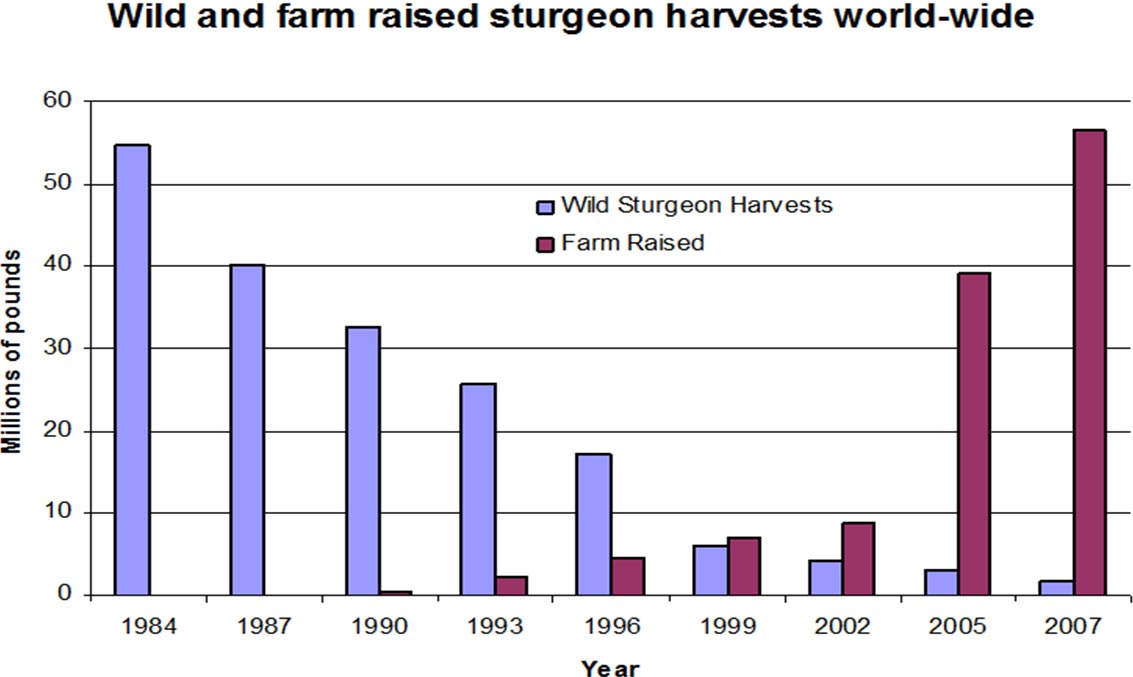 Length of Time it Takes to Produce Roe
Length of Time it Takes to Produce Roe
Fisheries and farms alike experience costs associated directly with the amount of time it takes a type of crustacean, mollusk or fish to grow and develop. When spawning in the natural world, sturgeon and other fish can lay millions of eggs at a time. With only a handful of hatchlings surviving the treacherous journey into adulthood, faster maturing fish species are much better at keeping up with mankind's demand for their meat and eggs than the slower growing, longer living sturgeons. Having generation lengths of 8 to 20 years, sturgeon take about three times as long to replenish populations in the wild (and are much more expensive to raise in captivity) compared to other roe producing fish types like salmon, trout and bowfin.
The length of time it takes for a fish to sexually mature and create eggs is a vital cost that must be factored into the the price offered to consumers. Depending on the fish, it could take anywhere between a couple years and a couple decades before a female is sexually mature and making desirable roe. The waiting game for producers of sturgeon caviar is no doubt financially strenuous, and sturgeon farmers in particular have to wait a long time before seeing any return on their investment. Additionally, if you don’t harvest roe at the correct time in the fish's life then the caviar could be left unusable or have to be sold cheaper as lower quality product.
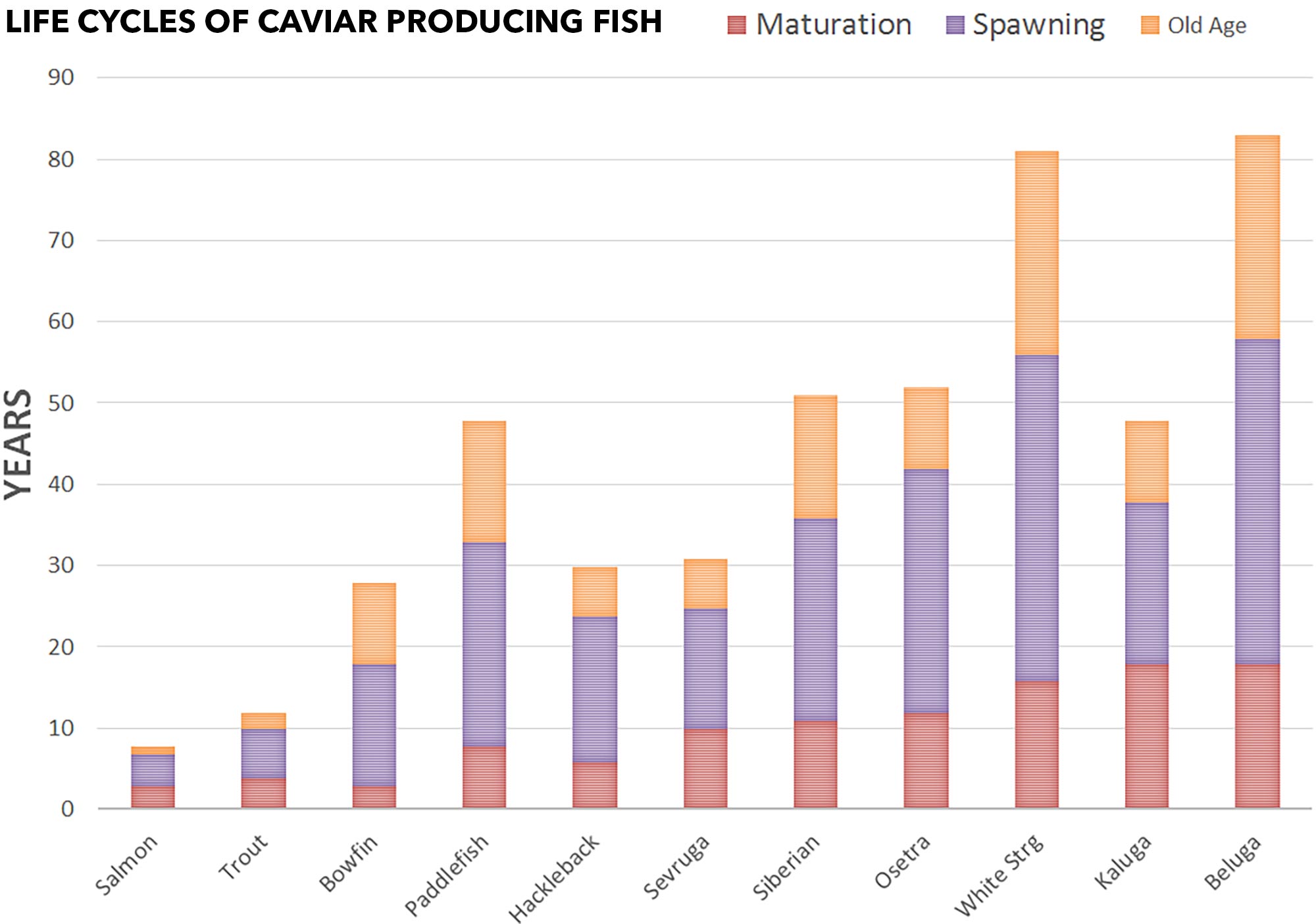
Harvesting & Manufacturing Caviar
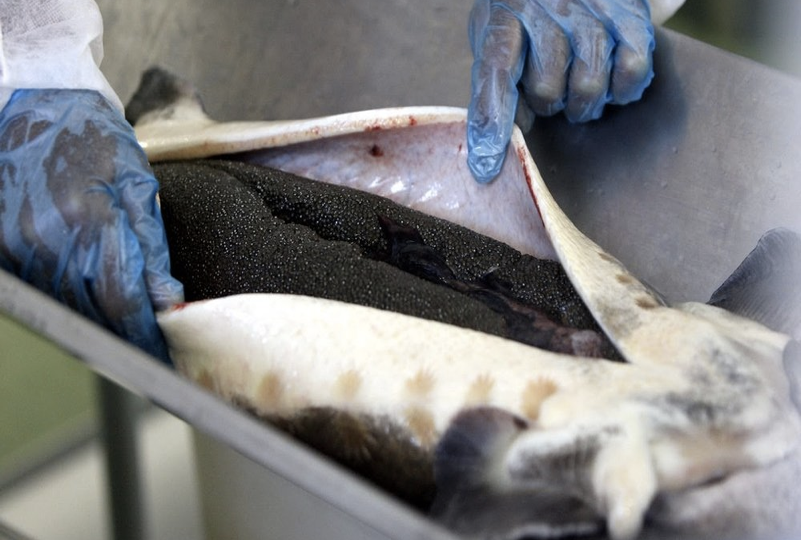
Not only does it take a long time before the main ingredient of caviar can be harvested, but the harvesting itself, along with washing, curing, inspecting, aging and other manufacturing processes of the roe, also takes time and costs money. Once the fish are finally mature enough to produce roe, the caviar harvester usually kills the fish to obtain the roe. Can you imagine waiting a decade for a sturgeon to mature only to kill it and then start the whole process over again? New humane harvesting methods are starting to appear where fish are not killed to obtain their eggs, but to this day no-kill caviar does not achieve the same level of quality as traditional harvesting methods. Learn about all the different ways caviar can be harvested and made into caviar here.
Once at maturity, a fish can either be milked or harvested for its roe. No matter how it is done, collecting the eggs requires considerable time and specialized care. Even with modern technological advances, caviar harvesters have yet to implement any degree of automation and fish roe is still removed solely by hand. In addition, the unsalted eggs must be kept completely sterile throughout the screening and washing process as they are extremely susceptible to contaminants in their raw state. The particular delicacy of the entire caviar operation leads to higher production costs, even at the most modern farms and fisheries.
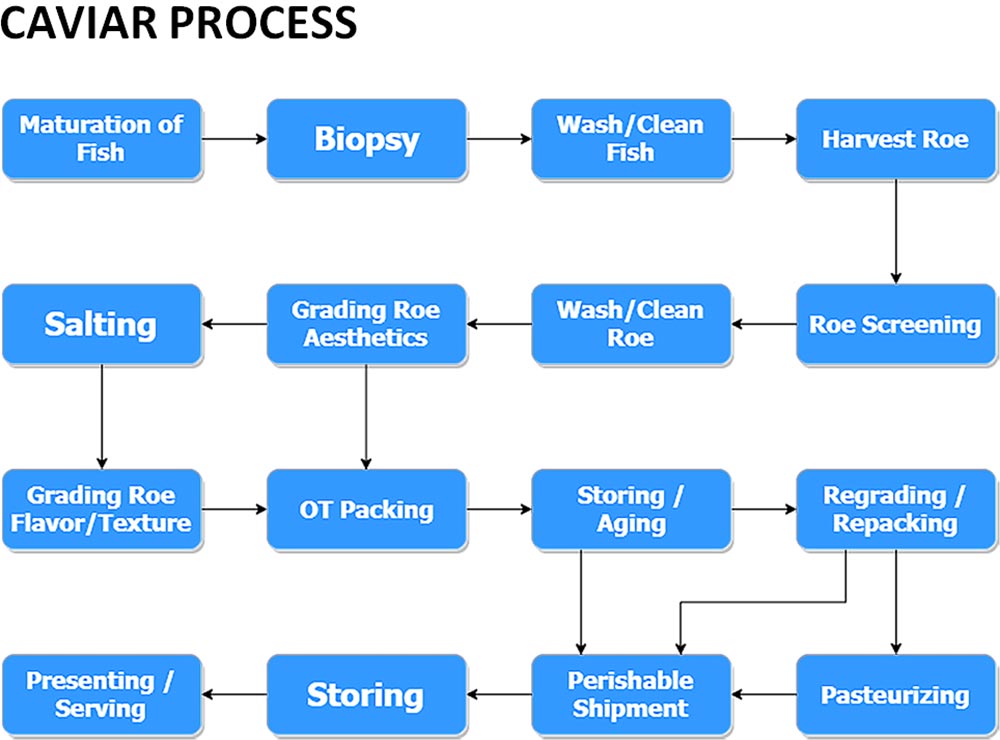
Processing the eggs to meet the malossol model involves additional expertise and particular packaging to be made into fine caviar. The curing method used to make high-end caviar causes it to be more expensive than other seafood products because the process itself is a balancing act between maximizing the roe flavor and optimally preserving the product.
Malossol caviar is a perishable product and must be kept at the right temperature throughout the entire production, aging and shipping process.
Quality of the Caviar (Caviar Grades)
Much like other products, a caviar's price will fluctuate up and down depending on its quality. Each individual fish roe is unique, and even grains from the same species of fish harvested from the same source at the same time can vary drastically between specimens. A roe will be respectively higher or lower in price when it is given an above or below average grade by those producing it.
Caviar sellers use a number grading systems to rate egg color, size, maturity, separation, uniformity, fragrance, lucidity, firmness and flavor. The initial grading might occur before any salt curing has taken place, as the eggs are inspected to identify those visual indicators that disqualify the product from being considered "#1". Grade 1, or A-Grade, is a title reserved only for roe that ideally satisfies the "norm" of that species. Grade 2, or B-Grade, tends to have smaller, wetter and softer beads than #1 product, which is why it is always cheaper.
All of the factors above are taken into consideration again after the roe has been properly salted and aged. Malossol cured caviar is always pricier than the saltier stuff and/or roes that contain additional preservatives. High-end caviar must be low-salt and consistently firm, having delicate texture with large grains that are intact and of fine color, smell, and taste. Borderline Grade 2 product today, smaller in size and less pleasing to the eye or palate but not to the degree of "kitchen caviar", is commonly labeled as "Select" grade. Average to slightly above average roe will usually be marketed as "Classic" and "Royal", while the largest pearls and rarest colors receive titles like "Supreme" and "Imperial". Every caviar seller uses these grades and/or other terms decisively to express their grading scale to potential customers and create product diversity. While all these names might get confusing, you can get more clarity on the caviar grading systems here.
On a side note, there are also old-school grades for color and egg size of classic Russian species like Beluga. Traditionally the eggs were labeled as either 0, 00, or 000. "0" is usually reserved to indicate smaller eggs with darker gray colors, "00" indicates a medium eggs with gray color, while "000" are labeled on the largest eggs and lightest of colors, which tend to be more silver-ish. This system is rarely used today as the wild supply of classic caviar sturgeon is no longer sustainable, but customers might still see the 0, 00, 000 grades being used by certain sellers.
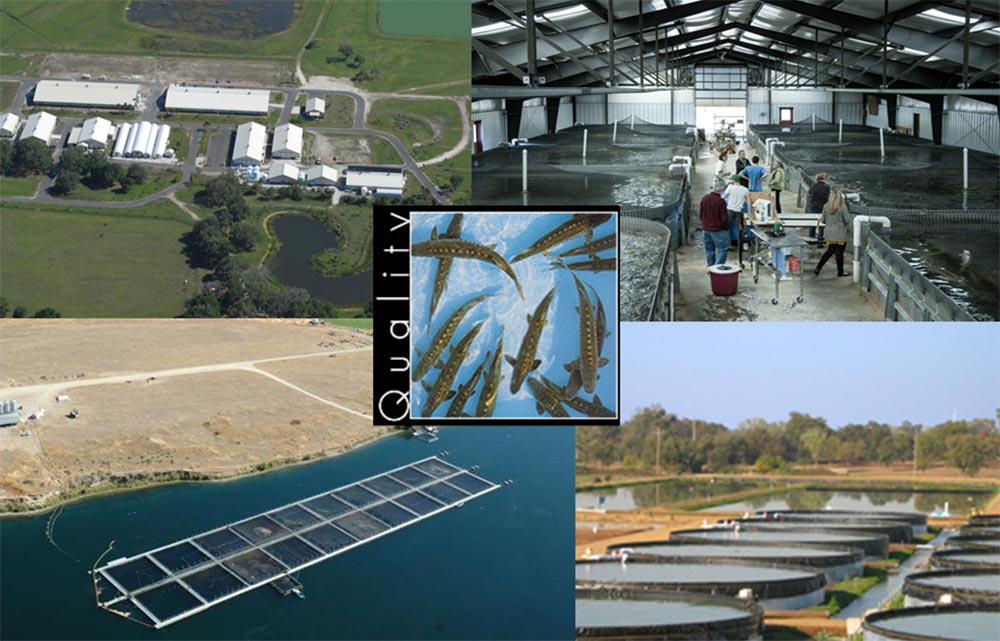
Supply & Demand
Lastly, the age-old law of supply and demand affects the final price of caviar. Above are the reasons why the supply of caviar low and why it can take so long for the supply to increase, but there also continues to be a high demand for caviar that keeps prices up. Caviar has always been considered food for the super-rich and royalty, which makes it coveted as a status symbol that people desire for its one-of-a-kind taste.
Caviar's popularity has only increased in the last few decades. While caviar farming has gained some ground on meeting consumer demand, more unique uses and diversity of products have grown the caviar industry to new heights in terms of sales volume. When you pair a low supply with high demand, then the outcome will be a high price, but where do caviar prices stand today?
Caviar Price
Expensive caviar usually comes from rare sturgeon species that can take many years to develop roe, while cheaper caviar and fish roe come from more abundant species that can produce eggs in far less time. Encompassing the 5 caviar cost factors, the caviar price calculation generally works out to: Caviar Process + Caviar Rarity = Caviar Value
Process: Most non-sturgeon and lower end caviar is still wild-caught, while the majority of sturgeon roe available in the current market is supplied by fish farms. Although the price of an individual fish's roe still fluctuates depending on the species as well as its quality and rarity (costs assumed by the processor), the shift from wild-caught sources of sturgeon to farm-raised caviar has caused the cost of true caviar to directly reflect the expenses that a farm will incur during the raising of sturgeon and processing of the caviar.
Rarity: Thanks to the same advances in aqua farming and production technology, raising fish has become more efficient and economical than ever before, and is supplying the widest range of consistent quality roe products to the most customers ever as well. The number of aqua farms raising sturgeon for caviar is at an all-time high and causing the price of fine sturgeon roe to go down slightly while wild populations work towards a natural recovery.
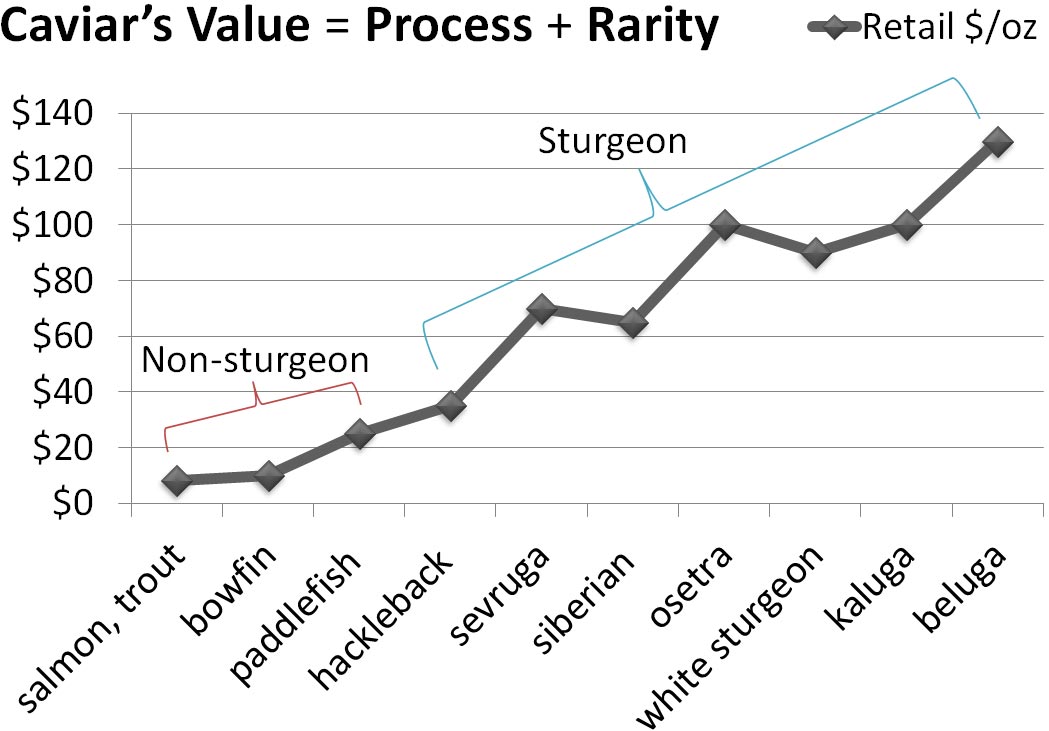
What is the most expensive caviar?
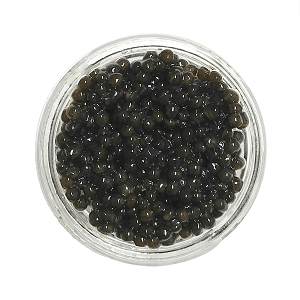
While there are a few non-fish roes like white escargot caviar contending for the title of "most expensive", pure malossol beluga sturgeon roe is consistently the costliest caviar in terms of rarity and processing expenses. As the largest freshwater fish on earth, beluga are extremely costly to raise and scarcely seen in the wild. The Guinness World Book of Records states the most expensive caviar in the world is Almas from rare Iranian Albino Beluga sturgeons. “Almas” means diamond in Russian and with white pearls and a price tag of $34,500 for 1kg, you can see how it gets its name. This caviar is harvested from wild southern Caspian Sea beluga at around 60 years of age with rare pigmentation defects. There are very few of these sturgeons left in the Caspian Sea and it is illegal to import any wild Iranian beluga products in the USA, so buying earth's most expensive caviar in our country could cost you more than just what's on the price tag.
Recently, a new competitor, Strottarga Bianco, has entered into contention for the highest price caviar, but some do not consider it true caviar because of an added twist. Like the Almas above, this caviar comes from an albino sturgeon but eggs are laced with 22-karat gold. Created by Austrian fish farmer Walter Gruell, Strottarg Bianco will cost you $40,000 for just a teaspoon.
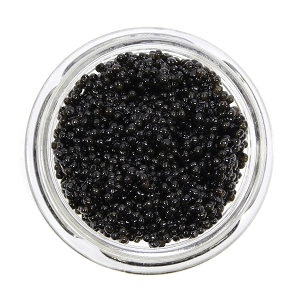
What is the cheapest caviar?
Salted and preservative-added roes like capelin, lumpfish and tobiko can retail for around $1 an ounce, making them one of the cheapest roes you can buy. Malossol cured non-sturgeon roes and bottargas are quality substitutes for "real" caviar and usually sit in the $5 to $15 per ounce range. If we are just talking true caviar (caviar from sturgeon), then we would consider Hackleback caviar to be the most affordable caviar. This caviar comes from the American sturgeon (Shovelnose Sturgeon) and is one of the faster-growing species in the sturgeon family. It reaches full maturity at 38” and you can expect the caviar to be small and firm with all the characteristics and tastes of the classic wild sturgeon.
Caviar Price – Final Thought
As you can see, the prices of caviar can vary greatly from one product to the next, but they are all directly influenced by the following factors: which animal the roe derives from, the time it takes to mature, the manufacturing process, the quality of the processed roe and the overall supply and demand of the market.
Yes, the cost of real caviar is still relatively expensive because of all the time and resources it takes to produce it, but even the rarer, higher quality sturgeon roes which were once nearly wiped from the planet have become affordable again, all thanks to the successes of sturgeon farming and protections placed on wild species.
Sources:
https://en.wikipedia.org/wiki/Sturgeon
https://wwf.panda.org/knowledge_hub/endangered_species/sturgeon/


